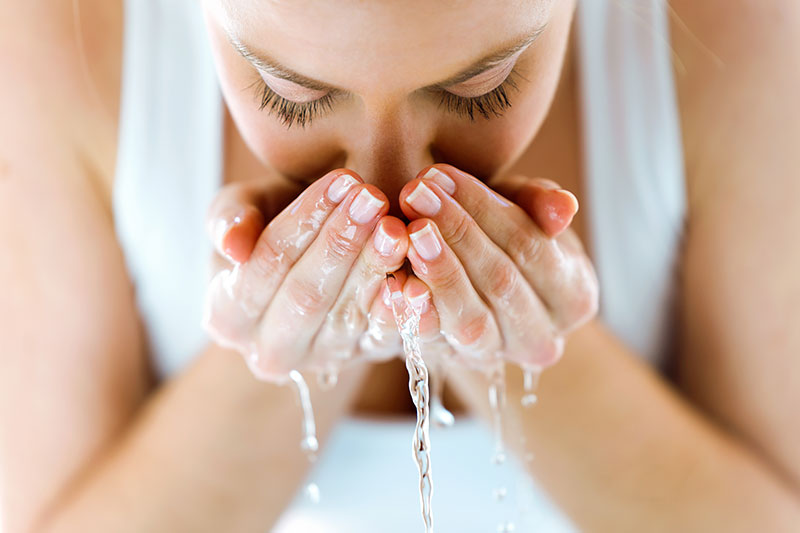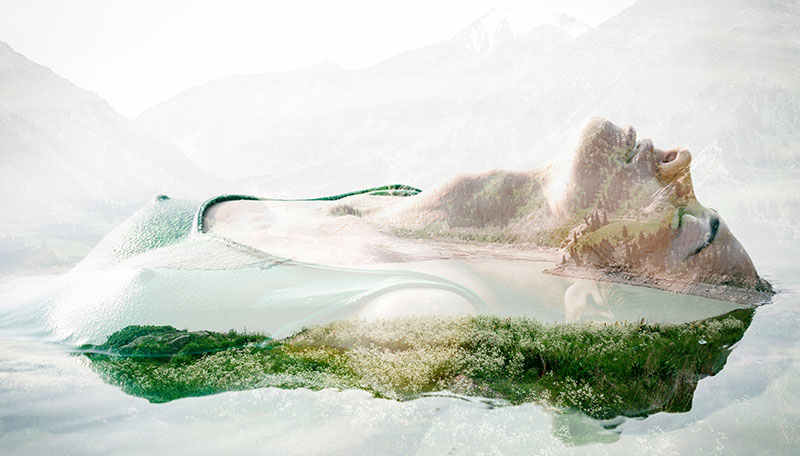Water, the basis of life
Water (H2O) is a polar inorganic compound that is at room temperature a tasteless and odorless liquid, nearly colorless with a hint of blue (Acadamia).
Currently, water covers approximately 71% of the Earth’s surface, which is why we call it the blue planet. Although we may forget this, water is never still, and goes through a cycle from one place to another, from one form to another: liquid, solid and gaseous and is known as the “universal solvent of life” because it is capable of dissolving more substances than any other liquid.
We teach children key information about water as resource:
- Less than 1% of the water on the planet is naturally drinkable and accessible
- Water is vital to the human organism
- 71% of the water used by humans is allocated to agriculture, a primary need for human beings
- Water is an excellent solvent for a wide variety of chemical substances, thus it is widely used in industrial process, washing and cooking
- Long-distance, commodities are run through the ocean and seas.
That being said, it’s key to recall that oceans and seas hold 96% of the total global water as salt water, which leaves 3.5% as freshwater that can be drank and used by human beings (USGS); 69% of this freshwater is in ice form, 31% in groundwater and 0.3% easily accessible in lakes and rivers.
Although people have created new ways to access clean water faster, climate change, pollution and growing demand are affecting the water cycle leading to water scarcity, ie the lack of sufficient available resources to meet the need of water usage in a region (Science Daily).
Today, more than 1.2 billion people lack access to clean drinking water.
Water is vital to our ecosystem and biodiversity, and also to the economy, playing a crucial role in the sustainable growth of our planet.
Water, a key component in beauty and personal care
Last year, in Europe, 33,161 products containing water were launched, i.e. 44.6% of the total launches during this period (Mintel, GNPD). 40% of those launches were made in skin care, 21.6% in hair care and 16.7% in toiletries.
It is clear that water is a key component of beauty and personal care products. According to Univar Solutions laboratory experts, a cream formula contains from 60-85% of water, a lotion up to 90%, and shower gel or shampoos up to 95%.
It is used as the main solvent to dissolve solid, liquid and gaseous hydro-soluble ingredients. Manufacturing processes often require thousands of liters of water to clean, refresh and process products; this is called ‘virtual water’.
The use of personal care products also leads to water consumption. However, water or aqua vitae is becoming a rare resource, which is why consumers are increasingly concerned about the INCI name aqua in their product selection.
Consumers now ask, is the production method efficient? Does the company use water during the manufacturing process? How will the ingredients used in the formula impact consumable water? Customers want to know if the beauty products they use are ethical or not, and how the brands they use on a daily basis address the problem of water scarcity before, during and after the use of product.
Linda Treska, founder and CEO of, Pinch of Colour says, “conserving water has become a global initiative and being conscious of how we use will become a big topic in 2019 and beyond”.

Today, the market is transitioning, giving the opportunity to brands to lead and be pioneers. Indie brands are adopting the initiative, but so are mainstream brands. For instance, a major actor in the industry launched a ‘liquid-free’ line in 2017 that is focused on reducing or eliminating the use of water altogether. Another brand launched a patented fast-rinsing technology to reduce shower time.
The question remains, “How can we innovate within the beauty and personal care industry from a water-conscious perspective?” Products can be developed to reduce and eliminate manufacturing water consumption (virtual water), the water dosage in the formula, or the water necessary to use the product. Brands can choose to work on some parameters or all of them in order to response to consumers and make responsible choices.
Anhydrous formulas
Anhydrous formulas contain no water in their structure, and can be claimed as water-free. These include oil-based formulas, oils and serums, fats-based cosmetics or dry products, such as powder-based ones.
Well-known for make-up applications, these can be a great option for skin care, hair care and toiletries: balms and cleansing balms, butters, salves, oil blends, serums, powder mix, and solid bars.
For instance, for skin care, we have seen an increasing number of cleansing balms, allowing us to reduce the manufacturing water used in the process, the water in the formulas and during use. For hair care, powder dry shampoos allow us to reduce the virtual water used to produce, eliminate the water in the formula and to reduce the consumers’ water consumption by spacing time between two shampoos.
Anhydrous formulas can therefore have a positive impact on water consumption.
Add water and hydrous formulas
A hydrous formula that contains water or an anhydrous formula that needs addition of water for use can have a positive impact on reducing water consumption.
- Concentrated formulas: Reducing the rate of water in the formula; it can be used as it is or dissolved in another product. For instance, an anti-ageing concentrated serum can be added to the daily face cream
- Two in one products: Limit the number of products and steps in a beauty routine to reduce the consumption of water by consumers. For example, a two in one shampoo and conditioner reduces the products used, but also the water used to cleanse hair
- Rinse-less hydrous solutions: Water-based solutions used to cleanse skin and hair that do not need any use of additional water. For instance, micellar water that allows us to cleanse without rinsing
- Solid bars: Solid products are a great option to reduce water consumption as solid shampoos
- Innovations: Innovations are also a way to reduce water consumption by developing eco-conscious technologies. For instance, 57% of US soap, bath and shower consumers would be interested in products that produce less foam for quicker rinsing, which shows that innovation can also lead to a water consumption reduction.
Empowered consumers
In 2019, 52% of German beauty and personal care product consumers bought natural and organic products because they believe they are better for their health and wellbeing, while 56% bought such products because they are better for the environment. (Source: Mintel, Lightspeed)
In France, Spain and Italy, the results are approximately the same (France: 60% vs 50%, Spain: 52% vs 56%, Italy: 48% vs 44%) (source: Mintel, Lightspeed). Those numbers show the growing environmental consciousness of today’s consumers; not only do they buy natural and organic products for their own wellbeing, but also for their planet. Eco-consciousness is not a trend, but a movement that is transforming all industries.
Michael Nolte, Creative Director at Beautystreams tells us that safe, clean, beauty will become an even more important topic, with a higher demand by the mainstream in eco-friendly processing and innovation (Source: Cosmetics Business).

In 2019, in France, Spain and Italy, more than 75% of the interrogated consumers stated that brands should have a sustainable program replacing the natural resources they use to make their products (France: 77%, Italy: 75%; Spain: 76%) (source: Mintel, Lightspeed).
Consumers are increasingly aware of the impact of their purchasing behavior on the environment. Brands need to adapt now to have an impact in the long-term and to exist. Brands that don't adapt and change their approach now won't exist in the future.
Opportunities
Sustainability is often associated to the idea of the ethically sourced organic, vegan or natural ingredients. But we can’t forget water. Water/aqua is the most common commodity used in the beauty and personal care industry. Today’s consumers are mindful of their water consumption and therefore questioning their beauty routines and product choices.
Water-free compositions offer different advantages to a company. It is a great way to boost the brand image and to gain customers trust by building a stronger ethical profile.
However, the structure of the water-free products offers additional advantages targeting other needs:
- Reduction of packaging: Paper packaging or packaging free options become more realistic as we offer dry and solid products to customers
- Reduction or elimination of preservatives: In water-free formulation, we do not have the same formulation constraints with bacteria developed in hydrous environments, thus we can reduce or eliminate preservatives
- Reduction of CO2 emissions and energy consumption: Dry formulas do not require heat, which reduces energy consumption. In addition, such formulas are lighter in weight; the same is true for concentrated, solid and 2-in-1 products, which allow us to reduce the energy to ship the goods, leading to a lower environmental footprint
- On-the-go formulas: As those formulas are lighter, reduce the amount of steps of the beauty routine and may not require the use of water, they are more convenient for travel.
Water-free offers a large spectrum of opportunities not only for customers, but also for the manufacturer. However, it is true that water-free products are usually more complicated to formulate and can limit the texture possibilities.
Univar Solutions has worked on a range of ready-to-use conceptual formulations in skin care, hair care and toiletries to support you.
Our portfolio also offers ranges of specialty products adapted to water-free formulation. If you need more information, please contact us at PersonalCareEMEA@univar.com.
Sources:
- Mintel: Reconsider the traditional water-based formulation
https://btyaly.com/articles/trend-water-free-cosmetics/ - Hungry Planet trend, Mintel https://www.sciencedaily.com/terms/water_scarcity.htm
- Water free cosmetics
https://btyaly.com/articles/trend-water-free-cosmetics/ - Cosmetics Business: the top 25 trends in cosmetics formulation
https://www.cosmeticsbusiness.com/news/article_page/Cosmetics_Business_predicts_5_Global_Beauty_Trends_of_2019_in_new_report/149971 - Water Scarcity
https://www.sciencedaily.com/terms/water_scarcity.htm
